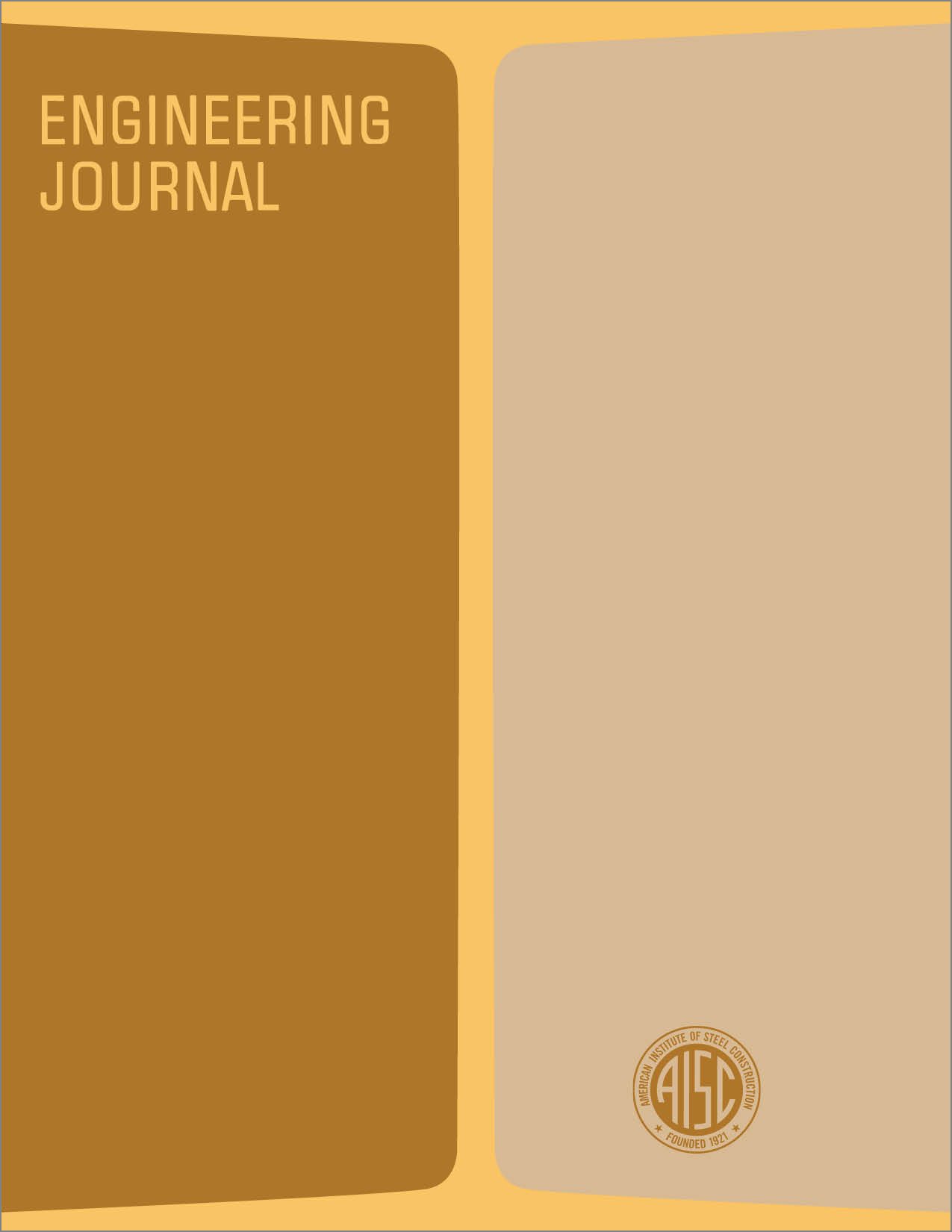A Fresh Look at Bolted End- Plate Behavior and Design
DOI:
https://doi.org/10.62913/engj.v15i2.311Abstract
End-plate connections of the typical configuration are increasingly used as moment resistant connections in framed structures. However, end plates designed by the prying force formulas in the AISC Manual of Steel Construction may be unrealistically thick. The prying force formulas were proposed by Nair et al., based on their work on tee hangers. Previously, Douty and McGuire and later Agerskov have presented other versions of the same basic model, and/or suggested adjusted coefficients to reflect test results. The research in the U.S.A. and abroad on this topic has been summarized by Fisher and Struik. In the prying force method, the end-plate region around the beam tension flange is considered analogous to a tee hanger. Hence, the terms "tee flange" and "plate" or "end plate" will be used interchangeably in this paper; "tee stem" will likewise correspond to the "beam flange". Figure 3 illustrates the dimensions and forces involved in the application of the prying force method. The section at or near the face of the tee stem at which the applied force is transferred to the tee flange will be designated the "load line"..

